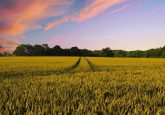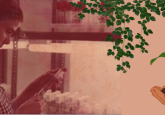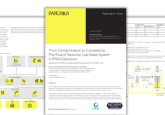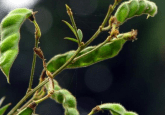Taking the highest tech genomics tools to the farmers in East Africa
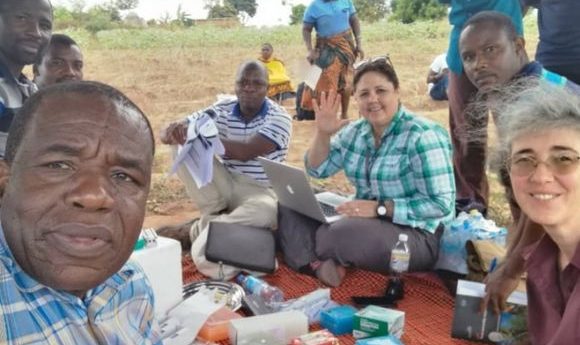
DNA sequencing in Africa is currently a laborious task requiring researchers to send data to a centralized sequencing lab in Kenya or to await results from overseas. This costs time and, in the case of small farm holders in East Africa, often lives. Laura Boykin, working with the Tanzanian Agricultural Research Institute set out to change this in 2016. Here is her story.
Nearly 1 billion people live in extreme poverty and the majority of them are smallholder farmers. The world has all the tools to end hunger, but to do so we have to get on the ground and push the data closer to them so they can make rapid decisions about their crops. Smallholder farmers in Africa and elsewhere should not be hungry – how can farmers be hungry? I believe that democratizing DNA sequencing will change the game and increase yields for these farmers. Older genomic technologies that were required to uncover the complexities of the pests and pathogens were not made for sub-Saharan Africa. These gigantic DNA sequencing machines cost upwards of 1 million dollars, and require huge amounts of constant electricity and specialized human capacity. These machines are few and far between on the continent, which has left scientists battling on the front lines no choice but to send samples overseas or to the one centralized lab in Kenya. However, when you send samples overseas it costs a lot, samples degrade, and getting the data back via a weak internet is nearly impossible. Sometimes it can take 6 months to get back to the farmer with the results. And by then it is too late. The farmer has suffered food shortages, which results in further hunger and poverty.
Taking the entire molecular lab and computational resources to the farmers of East Africa is not an easy task, but we have done it four times in the last 2 years – in Tanzania, Kenya, Uganda and the Democratic Republic of the Congo.
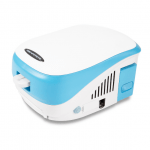
Hesaam Esfandyarpour and Chris Barbazette on the GenapSys™ revolution
GenapSys™ Founder Hesaam Esfandyarpour and Commercial Lead Chris Barbazette to discuss the new GenapSys Sequencer. GenapSys have developed a novel electrical-based platform, which is small and affordable, aiming to change the landscape of DNA sequencing.
The driving force behind this work is the Cassava Disease Diagnostic team that is led by Joseph Ndunguru, a plant pathologist at the Tanzanian Agricultural Research Institute (Africa). He and the team have been pushing very hard in the molecular diagnosis of plant pathogens space for years and our work was (and is) successful because of their pioneering work in the region to build both capacity and lab infrastructure. However, they were running into a slowdown to help farmers, owing to the need to send sequences overseas for Sanger sequencing, or the samples being stuck at the one region lab for months. In 2016 we heard of the Oxford Nanopore MinION being used in the Ebola fight in West Africa and we knew we had to try this in East Africa for the farmers.
So how did we do it?
Diversity equity and inclusion are essential in the process of doing the challenging work we have done and will continue to do for farmers. The most important thing for our team has been to get on the ground and outline the challenges – which include shipping of temperature-dependent reagents, lack of constant power, lack of constant internet and even the challenges of navigating the traffic! Each of these challenges will be different in the respective countries we work in and it is important to be inclusive when planning activities because precious resources will be saved by listening to the teams on the ground – the most useful work is done on that ground and not remotely. We formed the Cassava Virus Action Project over a 4-year engagement with a stellar team of scientists and industry partners. The keys to our success included:
Diversity and Inclusion.
We devised a long-term plan as a team before we started the mission. Our end goal was always to do sequencing of the cassava viruses on the farm, but we knew it would take a few steps to get there: Step 1: try it out in the lab in Australia. Step 2: capacity building in East Africa. This entailed trying it out in the labs in Tanzania, Uganda and Kenya with the scientists in these labs carrying out all the work. Step 3: take it all out onto the farm. Step 4: move beyond cassava. Step 5: everyone on the continent sequencing everything.
Communication.
Most importantly, we did everything as a team, from the beginning. This was from the shipping, to the supplies, to the execution of Tree Lab. Communication happened – in detail. This was mostly via WhatsApp. Our mission was to hand carry as little as possible because hand carrying supplies is not sustainable for our overall mission. So, we spent a considerable amount of time with the Oxford Nanopore team working out shipping to each of the countries. Each country has its own set of customs, labeling, agents, and much more – we also vowed to make the process as open as possible so we have documented the struggles on our project webpage: https://cassavavirusactionproject.com.
Trust.
Trust is the most important part of our collaboration. We make a list of things we will need (see Table 1 in https://www.mdpi.com/2073-4425/10/9/632 ) and then we see what the teams in East Africa have and we assign obtaining that thing to a person – and we trust they will make sure they have it on the day we execute the mission. We have written about our process of creating a team here: https://agrixiv.org/udf63/.
Execution.
The day before the trip to the farmers the team sits together, and we plan and discuss who is going to do what on the day at the farm. We land on the farm and the first thing we do is greet the farmers and proceed with formal introductions. This is as important as anything else we do on the day. Explaining to the farmers what we plan to do and including them from the beginning on what plants need to be sampled is key. Following that we walk around with the farmers and they pick the plants they want tested. Team members that were identified the day before handle the collection of the plant material and this includes taking all the important notes for the sample. Then we proceed Members of the team are designated to this task and library preparation is handled by other experts on the team. Then, the data are handled by experts in data analytics. Finally, giving the information to the farmers is key. What did we find? What does it mean for them? What can they do to handle the viruses? Where can they go to get virus-free material that is resistant to what we found in their fields? All of these questions are answered on the spot by team members who are experts in science communication with farmers. This includes being sensitive to gender, language and other very important culture-appropriate practices that have been discussed internally with the team.
Big challenges and bigger rewards
The biggest challenges we have are the funding to do the work, computational resources, access to the internet, and keeping reagents cold. However, the biggest reward is the farmers’ faces when the results are presented to them. Also, all the data stays with the scientists in the region, which is excellent. The capacity has been built to handle further outbreaks, not just for plants, so we are planning for the future.
